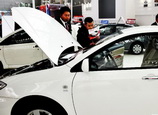
Investment structure needs changes as quickly as possible to meet the consumption demand created by urbanization
Will China's economic growth in the next five to 10 years be driven mainly by investment or consumption? Maintaining a rational investment rate is necessary because China is still in the process of rapid economic transition and development. The problem is that the lingering high investment rate and the over-expansion of investment have led to a serious imbalance between investment and consumption. In order to adapt to the changes in consumption demand resulting from the country's ongoing urbanization, it is imperative to transform investment.
The next 10 years will be a crucial period for China's transformation and development, and releasing consumption demand is the most important economic and structural readjustment. This requires mobilizing private capital so the government can invest more in public services.
Consumption not only drives economic growth and creates investment opportunities, it also leads to optimization of the investment structure. But in the short term, consumption is a slow variable and investment is more important in stabilizing growth. In the medium and long term, however, consumption is the ultimate purpose of investment. Only when investment is turned into consumption, can it be regarded as being effective and become a driving force for growth, especially as the prolonged investment-driven growth is unsustainable because the low-cost expansion period and demographic dividend are coming to an end.
Although investment without the support of consumption has a role in stabilizing short-term growth, it will most likely create more obstacles to growth and lead to a distorted industrial structure, reduced marginal efficiency of investment and overproduction.
 |
















 Landmark building should respect the public's feeling
Landmark building should respect the public's feeling


![]()
